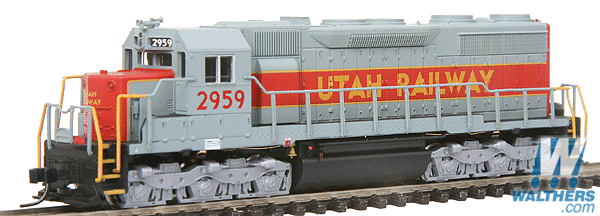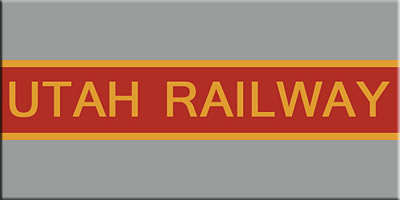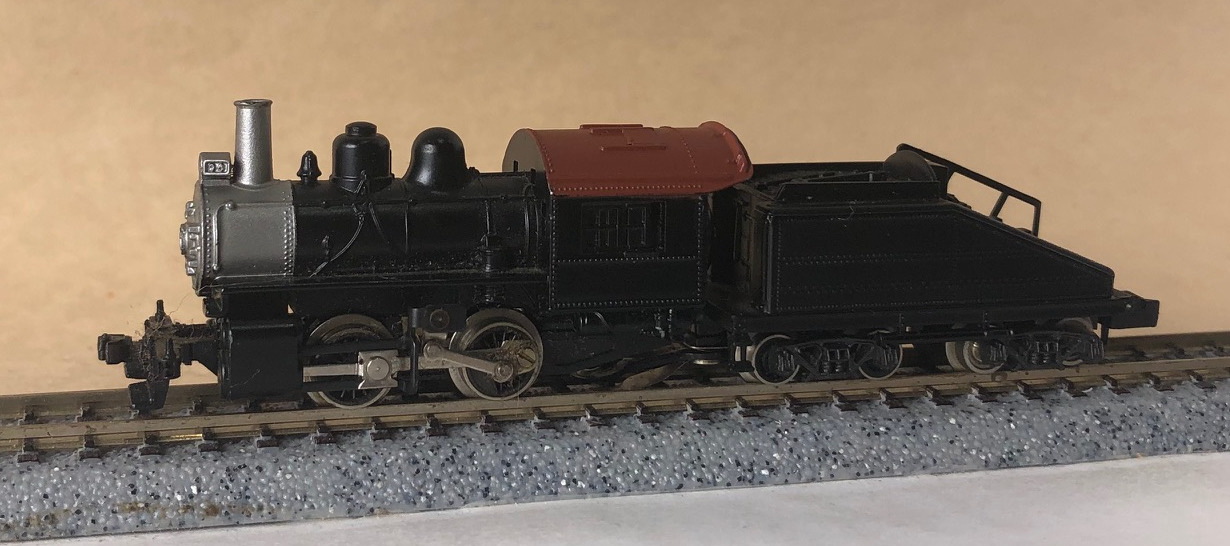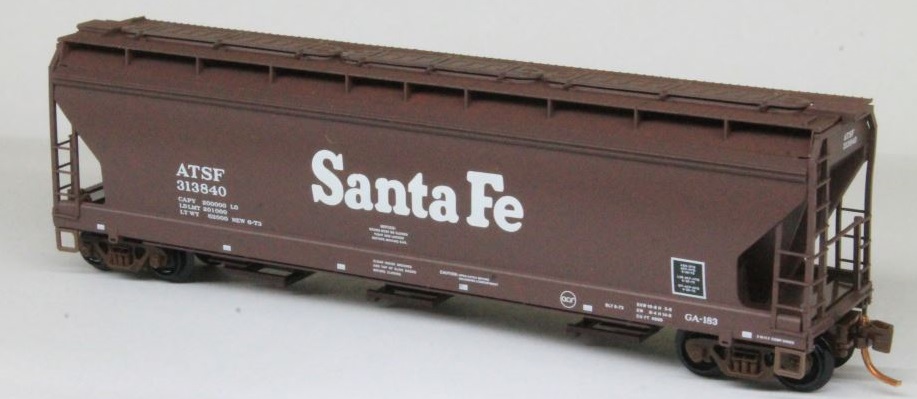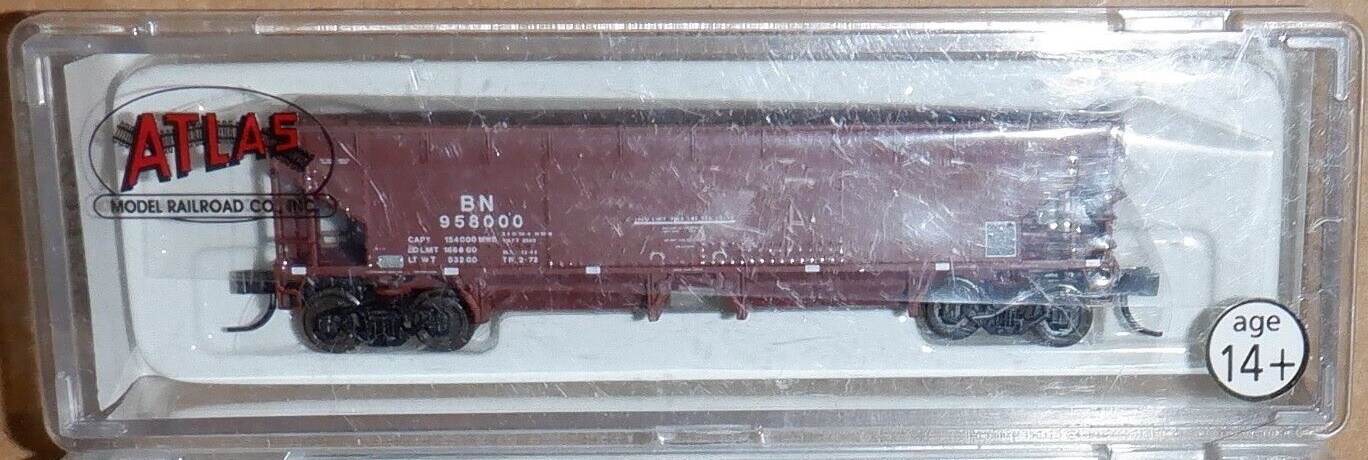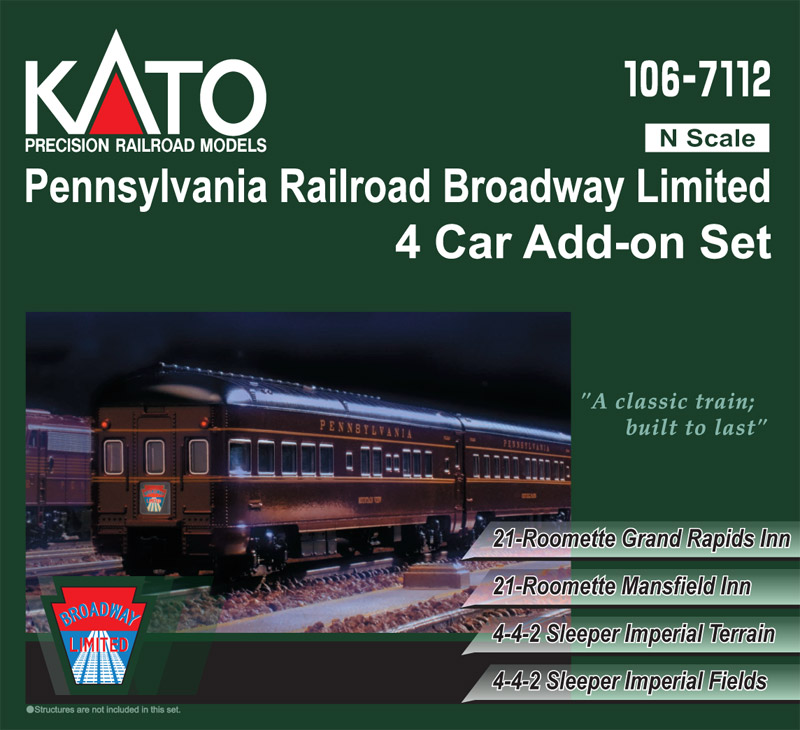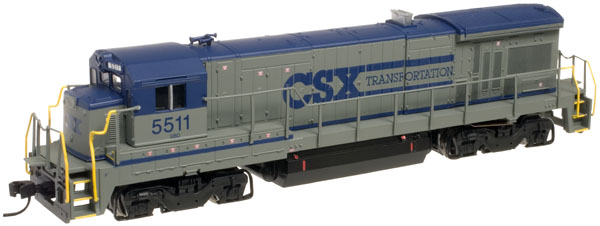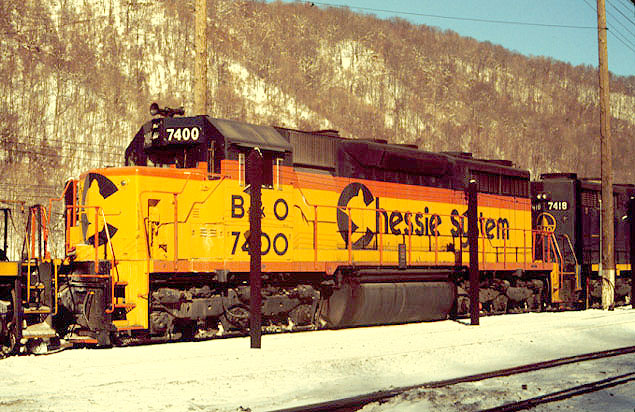Model Information: This Atlas model was introduced in the 1999 Atlas catalog, although it was not available for purchase until early 2000. It was produced in China from the get-go and delivered a fairly modern mechanism for its time. It is a split-frame chassis with a single light board using a 5-pole skew-wound motor with two flywheels. In 2005, Atlas revised the model slightly by using its new slow-speed motor and golden-white LED's on the light board. It is a high quality mechanism with excellent running performance. Personally I prefer the faster motors, but I like to run my locomotives fast.
DCC Information: Both versions of this model are fully DCC-Ready. In 2018, the chassis was modified and the model now uses the DN166I3 decoder.
Prototype History: The EMD SD35 was one of the builder's first second-generation models, released during the mid-1960s. While the locomotive was not as successful as some of its other designs it did sell a few hundred examples during an era when railroads were only starting to realize the benefits of six-axle power. New features of the SD35, which dated back to the SD28 of 1965 was a redesigned frame and new Spartan Cab, commonly known as the standard cab. While EMD was experiencing growing competition from General Electric it was still in its prime and would make another run of phenomenal success during this time with models like the GP35, GP38 series, SD40 series, and others. About a dozen major railroads purchased the SD35 and a number of these remain in service. One example is known to be formally preserved, Baltimore & Ohio #7402 at the Baltimore & Ohio Railroad Museum, as well as the variant SDP35, Seaboard Air Line #1114 in Hamlet, North Carolina.
Between 1964 and 1966, EMD built a total of 360 six-axle 2,500hp SD35 locomotives. An additional 35 steam generator-equipped SDP35 locomotives were also built during this period. These were all part of EMD’s “35-Series” which also featured the four-axle, 2,250hp GP35 locomotive. All locomotives included the standard EMD 567-series prime mover. A stock model weighed 360,000 pounds, but many roads chose to add weight to increase the locomotive’s tractive effort. From the mid-1960s through the 1980s, the SD-35 could be found in road service on both large and mid-sized roads across the US. Today the number of active units has dwindled to a select few, including those operated by regional railroad Montana Rail Link. From American-Rails and Atlas.
Between 1964 and 1966, EMD built a total of 360 six-axle 2,500hp SD35 locomotives. An additional 35 steam generator-equipped SDP35 locomotives were also built during this period. These were all part of EMD’s “35-Series” which also featured the four-axle, 2,250hp GP35 locomotive. All locomotives included the standard EMD 567-series prime mover. A stock model weighed 360,000 pounds, but many roads chose to add weight to increase the locomotive’s tractive effort. From the mid-1960s through the 1980s, the SD-35 could be found in road service on both large and mid-sized roads across the US. Today the number of active units has dwindled to a select few, including those operated by regional railroad Montana Rail Link. From American-Rails and Atlas.
Road Name History: The Utah Railway was completed in 1914 to connect several coal mines south and west of Helper, Utah (on the Rio Grande mainline) with the outside world. The Utah branches connect with the Rio Grande at Utah Railway Junction, just northwest of Helper. The Utah then utilizes trackage rights on the Rio Grande northwest to Thistle. The remainder of the line between Thistle and Provo is on paired track with Rio Grande (later SP then UP.) Total mileage is 95.
In the steam era, the locomotive fleet consisted of a quartet of 2-8-0’s (likely for switching the mines), nine 2-10-2’s for road service, and a trio of 2-8-8-0’s which were probably used as helpers. All seem to have been of Union Pacific design.
The Utah Railway dieselized in 1952 with seven Alco RSD4’s and a bit later an RSD5. As traffic began to build in the modern era, they picked up three RSD15’s and an RSD12. In 1985, they began relying on leased power from Helm and later from MK.
The 1996 merger of Southern Pacific and Union Pacific changed things for the Utah. First, they were contracted by BNSF to handle their haulage trains over a portion of the “Central Corridor” as UP calls the old Rio Grande. Secondly, UP granted Utah trackage rights east from Utah Railway Junction all the way to Grande Junction, Colorado which linked the Utah Railway to several more large coal mines. At this point, Utah hired a number of new people and leased more than a dozen additional diesels for heavy road service. Now stretching from Grande Junction to Provo, Salt Lake City and Ogden, the Utah Railway operates 423 miles of track. In addition to coal, UTAH moves aggregate, brick, building materials, cement, chemicals and petroleum products.
In 1999, Utah purchased the Salt Lake City Southern, a 25 mile shortline in the area from its owner RailTex. Owned by a string of mining companies over the years, the Utah was sold in 2002 to the Genesee & Wyoming shortline group for $54 million. Today's collection of photos takes us from 1975 to 1988.
In the steam era, the locomotive fleet consisted of a quartet of 2-8-0’s (likely for switching the mines), nine 2-10-2’s for road service, and a trio of 2-8-8-0’s which were probably used as helpers. All seem to have been of Union Pacific design.
The Utah Railway dieselized in 1952 with seven Alco RSD4’s and a bit later an RSD5. As traffic began to build in the modern era, they picked up three RSD15’s and an RSD12. In 1985, they began relying on leased power from Helm and later from MK.
The 1996 merger of Southern Pacific and Union Pacific changed things for the Utah. First, they were contracted by BNSF to handle their haulage trains over a portion of the “Central Corridor” as UP calls the old Rio Grande. Secondly, UP granted Utah trackage rights east from Utah Railway Junction all the way to Grande Junction, Colorado which linked the Utah Railway to several more large coal mines. At this point, Utah hired a number of new people and leased more than a dozen additional diesels for heavy road service. Now stretching from Grande Junction to Provo, Salt Lake City and Ogden, the Utah Railway operates 423 miles of track. In addition to coal, UTAH moves aggregate, brick, building materials, cement, chemicals and petroleum products.
In 1999, Utah purchased the Salt Lake City Southern, a 25 mile shortline in the area from its owner RailTex. Owned by a string of mining companies over the years, the Utah was sold in 2002 to the Genesee & Wyoming shortline group for $54 million. Today's collection of photos takes us from 1975 to 1988.
Brand/Importer Information: In 1924 Stephan Schaffan, Sr. founded the Atlas Tool Company in Newark, New Jersey. In 1933 his son, Stephan Schaffan, Jr., came to work for his father at the age of sixteen. Steve Jr. built model airplanes as a hobby and frequented a local hobby shop. Being an enterprising young man, he would often ask the owner if there was anything he could do to earn some extra spending money. Tired of listening to his requests, the hobby-store owner threw some model railroad track parts his way and said, "Here, see if you can improve on this".
In those days, railroad modelers had to assemble and build everything from scratch. Steve Jr. created a "switch kit" which sold so well, that the entire family worked on them in the basement at night, while doing business as usual in the machine shop during the day.
Subsequently, Steve Jr. engineered the stapling of rail to fiber track, along with inventing the first practical rail joiner and pre-assembled turnouts and flexible track. All of these products, and more, helped to popularize model railroading and assisted in the creation of a mass-market hobby. The budding entrepreneur quickly outgrew the limitations of a basement and small garage operation. Realizing they could actually make a living selling track and related products, Steve and his father had the first factory built in Hillside, New Jersey at 413 Florence Avenue in 1947. On September 30, 1949, the Atlas Tool Company was officially incorporated as a New Jersey company.
In 1985, Steve was honored posthumously for his inventions by the Model Railroad Industry Association and was inducted into the Model Railroad Industry Hall of Fame in Baltimore, Maryland. In addition, Steve was nominated and entered into the National Model Railroad Association Pioneers of Model Railroading in 1995.
In the early 1990s, the Atlas Tool Company changed its name to Atlas Model Railroad Company, Inc.
In those days, railroad modelers had to assemble and build everything from scratch. Steve Jr. created a "switch kit" which sold so well, that the entire family worked on them in the basement at night, while doing business as usual in the machine shop during the day.
Subsequently, Steve Jr. engineered the stapling of rail to fiber track, along with inventing the first practical rail joiner and pre-assembled turnouts and flexible track. All of these products, and more, helped to popularize model railroading and assisted in the creation of a mass-market hobby. The budding entrepreneur quickly outgrew the limitations of a basement and small garage operation. Realizing they could actually make a living selling track and related products, Steve and his father had the first factory built in Hillside, New Jersey at 413 Florence Avenue in 1947. On September 30, 1949, the Atlas Tool Company was officially incorporated as a New Jersey company.
In 1985, Steve was honored posthumously for his inventions by the Model Railroad Industry Association and was inducted into the Model Railroad Industry Hall of Fame in Baltimore, Maryland. In addition, Steve was nominated and entered into the National Model Railroad Association Pioneers of Model Railroading in 1995.
In the early 1990s, the Atlas Tool Company changed its name to Atlas Model Railroad Company, Inc.
Item created by: nscalestation on 2016-07-16 11:33:51. Last edited by Alain LM on 2018-04-17 10:58:25
If you see errors or missing data in this entry, please feel free to log in and edit it. Anyone with a Gmail account can log in instantly.
If you see errors or missing data in this entry, please feel free to log in and edit it. Anyone with a Gmail account can log in instantly.


